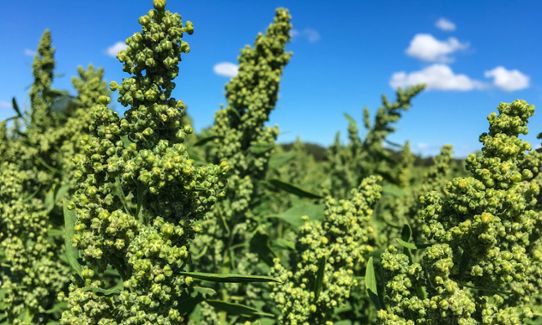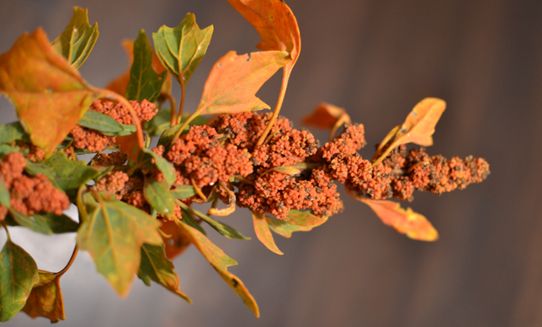At Ombergs Ekogård organic farm and Kastad’s farm in Östergötland, farmers David Appelgren and Erik Jacobsson are working to grow quinoa. In 2015, they began with a small-scale cultivation, only a few square metres, as there was little experience of growing quinoa in Sweden and they wanted to be sure that it could be done. It turned out favourable to grow under current conditions and the following year, they increased to half a hectare. That harvest was also successful and in 2017, 14 hectares were grown on the farms.
Climate change in Östergötland County
According to a future analysis of the climate in Östergötland County done by SMHI, the average temperature will increase, heat waves in the summers will become more common and the number of days with low soil moisture will increase. The annual precipitation will also increase and the largest increase in precipitation will mainly be in winter and spring. Short periods of strong precipitation and downpours are also expected to become more common in the summers.
Quinoa
Quinoa originally grows high up in the South American mountain chain of the Andes. The climate in the mountains means that the plant is well-suited to the climate changes Sweden is facing. It can namely handle dry conditions and shifting temperatures well. The Danish researcher Sven-Erik Jakobsen has devoted 20 years to developing a type of quinoa suited to Nordic growing conditions.

The initiative
The quinoa plant is similar to the rapeseed plant, which facilitated harvesting. The threshing was set to rapeseed and it worked very well. Once the plant had been harvested, the seeds are dried and sorted so that the husk can be polished away. They are then dried again and packaged. The farmers had to invest in machines from South America that can sort, polish, wash and dry the quinoa.

Ombergs Ekogård’s and Kastad farm’s initiative with quinoa is privately financed and even if they cannot indicate the budget or profit, they say that the cultivation was profitable. According to guidelines, they were to get one tonne per cultivated hectare, but this year’s harvest yielded nearly two tonnes per hectare.
Challenges and experiences
A challenge that arose with the growing of quinoa was the closely related weed white goosefoot. When white goosefoot grows next to the quinoa, there is a risk that the two plants cross. So it is important to keep the plants apart to be able to maintain the quinoa’s adapted properties. After harvesting, seeds from white goosefoot must also be sorted out.
The farmers are satisfied with their quinoa cultivation and encourage others to have the courage to make a stake on growing new crops.
More examples of climate adaptation
This is one of many examples of climate adaptation. There are more in the collection of ideas being built up by the Swedish National Knowledge Centre for Climate Change Adaptation at the Swedish Meteorological and Hydrological Institute (SMHI). The collection of examples has the aim of sharing experiences and providing ideas to everyone who works with climate adaptation. Examples describe concrete measures and challenges in several subject areas. They show how different actors have worked to adapt their activities to the climate changes that are already being noticed today and those that we cannot prevent in the future.